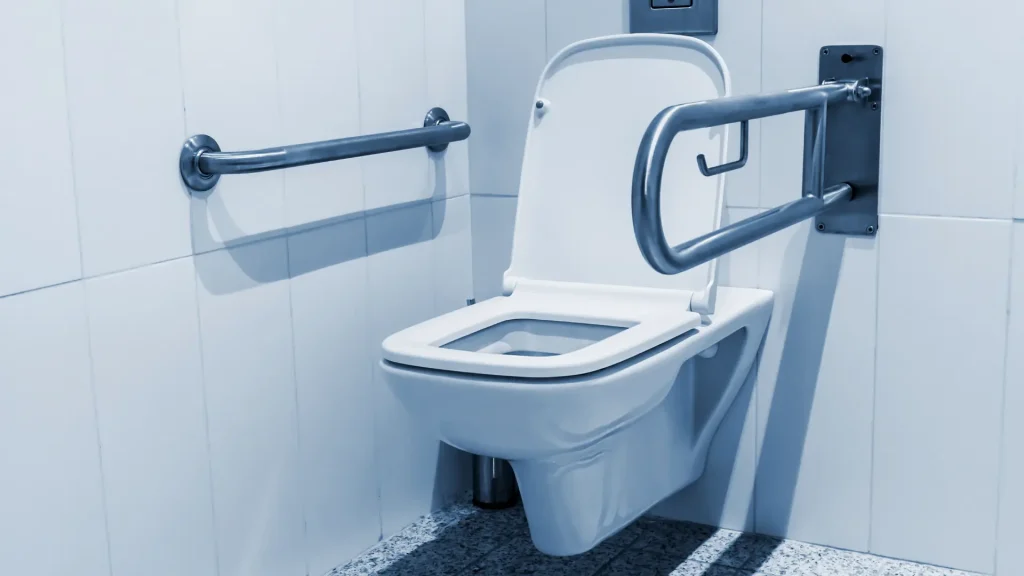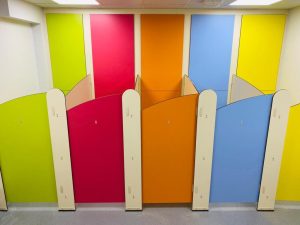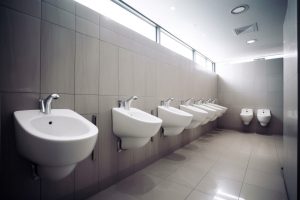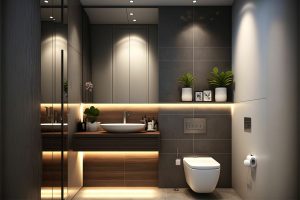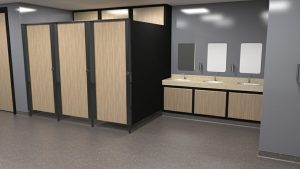Designing inclusive toilet cubicles is a crucial aspect of modern commercial washroom installations. Ensuring accessibility means creating a space where all users, regardless of physical ability, can use the facilities comfortably and safely. This is not only a moral obligation but also a legal requirement in many regions, including the UK, under the Equality Act 2010. In this article, we will explore the key considerations and best practices for designing accessible toilet cubicles that cater to the needs of everyone.
Understanding Legal Requirements
Before delving into the design specifics, it is essential to understand the legal requirements for accessible toilet cubicles. In the UK, the Equality Act 2010 mandates that businesses and public facilities provide reasonable adjustments to accommodate people with disabilities. This includes the provision of accessible toilet facilities.
Additionally, the Building Regulations Approved Document M provides detailed guidelines on the design and installation of accessible toilets. These regulations outline the minimum dimensions, required fixtures, and specific design features necessary to ensure accessibility. Adhering to these guidelines is crucial for compliance and for providing a genuinely inclusive environment.
Key Design Considerations
When designing accessible toilet cubicles, several key considerations must be taken into account to ensure they meet the needs of all users:
1. Adequate Space
One of the primary requirements for accessible toilet cubicles is adequate space. The cubicle must be large enough to accommodate a wheelchair, allowing the user to manoeuvre comfortably. The minimum recommended dimensions are 1500mm wide by 2200mm deep. This space should provide enough room for a wheelchair user to enter, turn, and transfer to the toilet seat.
2. Door Design
The door to an accessible toilet cubicle should be wide enough to allow easy access for wheelchair users. A minimum clear opening width of 850mm is recommended. The door should open outwards to maximise the internal space and be fitted with an easy-to-operate lock that can be opened from the outside in case of an emergency. Lever handles or push plates are preferable to knobs, as they are easier for people with limited dexterity to use.
3. Support Rails
Support rails, or grab rails, are essential features in accessible toilet cubicles. These rails provide support and stability for users with mobility impairments. They should be strategically placed around the toilet, sink, and any other fixtures to assist users in moving around the space. Typically, horizontal and vertical rails are installed on either side of the toilet and near the sink. The rails should be securely fixed and able to support a substantial amount of weight.
4. Toilet Height
The height of the toilet seat is another crucial consideration. An accessible toilet should have a seat height of between 450mm and 480mm. This height range makes it easier for users to transfer from a wheelchair to the toilet seat. In addition to the correct height, the toilet should be fitted with a backrest to provide additional support.
5. Sink Accessibility
The sink in an accessible toilet cubicle should be at a height that is convenient for wheelchair users. A height of 720mm to 740mm is generally recommended. The sink should have enough clearance underneath to allow a wheelchair to fit comfortably. Additionally, lever taps or sensor-operated faucets are preferable as they are easier to use for individuals with limited hand strength or dexterity.
6. Emergency Assistance
Accessible toilet cubicles should be equipped with an emergency assistance alarm system. This system typically includes a pull cord or button that can be easily reached from the toilet and the floor. In the event of an emergency, the user can activate the alarm to alert staff or carers that assistance is needed. The alarm should be clearly marked and regularly tested to ensure it is functioning correctly.
Best Practices for Inclusive Design
In addition to meeting the basic legal requirements and design considerations, there are several best practices that can enhance the inclusivity and usability of toilet cubicles for all users:
1. Clear Signage
Clear and easily recognisable signage is essential for accessible toilet cubicles. Signs should use simple language and symbols to indicate the location of accessible facilities. Braille signage can also be included to assist visually impaired users. Ensuring that signage is placed at an appropriate height and is well-lit can further improve accessibility.
2. Contrasting Colours
Using contrasting colours for walls, floors, and fixtures can help visually impaired users navigate the space more easily. For example, contrasting the colour of grab rails against the wall can make them more visible. Similarly, contrasting the colour of the toilet seat against the bowl can help users with visual impairments to identify the fixtures more easily.
3. Slip-Resistant Flooring
Slip-resistant flooring is a critical safety feature in any toilet cubicle, especially in accessible ones. The flooring should provide good traction, even when wet, to prevent slips and falls. Regular maintenance and cleaning are necessary to ensure that the flooring remains in good condition and free from hazards.
4. Adequate Lighting
Proper lighting is essential for all users but is especially important for those with visual impairments. The lighting in accessible toilet cubicles should be bright and evenly distributed to reduce shadows and improve visibility. Motion-sensor lighting can be a convenient feature, ensuring that the lights turn on automatically when the cubicle is in use.
5. Additional Features
To further enhance accessibility, consider additional features such as:
- Automatic Doors: Installing automatic doors can make it easier for wheelchair users to enter and exit the cubicle without assistance.
- Height-Adjustable Fixtures: Height-adjustable sinks and mirrors can cater to the needs of a wider range of users.
- Baby Changing Facilities: Including baby changing facilities in accessible toilet cubicles can accommodate parents with young children, making the space more versatile.
Conclusion
Designing inclusive toilet cubicles is essential for creating a welcoming and accessible environment for all users. By adhering to legal requirements, considering key design elements, and implementing best practices, businesses and public facilities can ensure that their washrooms are accessible to everyone, regardless of physical ability.
Inclusive design not only meets the needs of users with disabilities but also enhances the overall usability and safety of the space. Investing in accessible toilet cubicles is a commitment to equality and inclusivity, reflecting a modern and socially responsible approach to commercial washroom installations.


